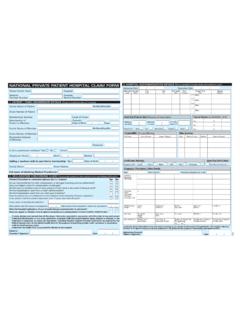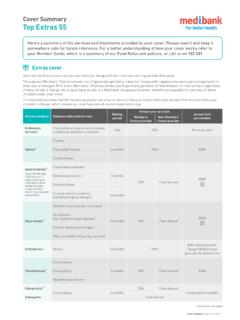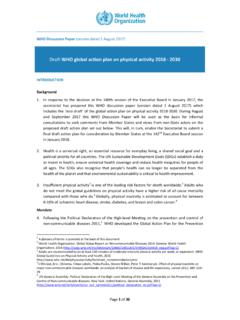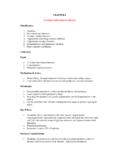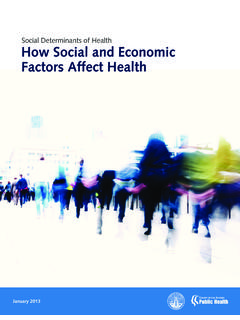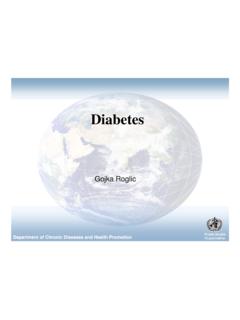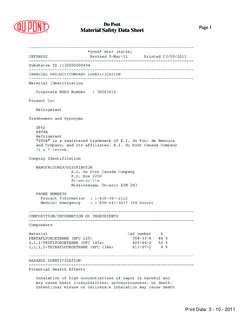Transcription of October 2008 - Medibank
1 The cost of physical inactivity October 2008 The cost of physical inactivity to the Australian economy is estimated to be $ billion. It is estimated that 16,178 Australians die prematurely each year due to physical inactivity . Productivity loss due to physical inactivity equates to working days per worker per is physical inactivity ? The National physical Activity guidelines (NPA guidelines) for Australians recommend 30 minutes of moderate-intensity physical activity on most days of the week as the minimum requirement for good be considered physically active the National physical Activity Survey states you should participate in at least 150 minutes of moderate - intensity physical activity over at least five sessions in a individual that does not meet this level of exercise is considered to be physically What is physical inactivity ?
2 4 What causes physical inactivity ?5 physical inactivity a major risk factor for ill health and mortality6-8 How do you measure the costs of physical inactivity ? a. Healthcare costs b. Economy-wide productivity costs c. Mortality costs9 What is the cost of physical inactivity in Australia?10 The benefits of physical activity and how to achieve them11 Sedentary behaviour3 Contents254 What causes physical inactivity ?The World Health Organisation2 estimates that physical inactivity causes million deaths per year worldwide, about 10 to 16 per cent of breast cancer, colon cancer and diabetes cases, and about 22 per cent of coronary heart disease (ischemic heart disease).
3 The World Health Organisation notes that levels of inactivity are high in virtually all developed and developing countries1. In developed countries more than half of adults are insufficiently inactivity a major risk factor for ill health and mortalityThe Australian Institute of Health and Welfare (AIHW) also notes that people who do not do sufficient physical activity have a greater risk of cardiovascular disease, colon and breast cancers, Type 2 diabetes and osteoporosis . Being physically active helps to improve mental and musculoskeletal health and reduces other risk factors such as being overweight, high blood pressure and high blood other health risk factors, physical inactivity can have an adverse effect on organisations as well as individuals.
4 Specifically, physical inactivity can impact on employee productivity by causing increased absenteeism and presenteeism, which impose direct economic costs to employers. Furthermore, physical inactivity can lead to larger healthcare costs and costs associated with disability and premature is the 2nd report by Medibank Private and KPMG-Econtech investigating the economic costs of physical report considers the costs to employers, individuals and the economy more broadly from reduced productivity and premature mortality. It also updates our previous work on direct healthcare costs for the current rapidly growing large cities of the developing world, physical inactivity is an even greater inactivity is largely a natural response to our environment.
5 Urbanisation has resulted in several environmental factors which may discourage participation in physical activity: population over-crowding; high-density traffic; and lack of parks, footpaths and sports / recreation facilities. The World Health Organisation notes that our culture increasingly values cars, television, computers, and convenience, making physical activity a less natural part of our lives. Some communities are designed with housing far from schools, shopping or workplaces making walking or biking for transportation infeasible.
6 More and more employees have sedentary jobs decreasing the amount of activity incurred during daily routines. 21st century life is increasingly becoming busier, with time poor individuals finding it difficult to undertake sufficient exercise. 2 World Health Organisation (2003), Global Strategy on Diet, physical Activity and AIHW website, World Health Organisation (WHO) physical inactivity : A Global Public Health Problem .b. Economy wide productivity costsLike other health risk factors, physical inactivity can have an adverse effect on organisations as well as , physical inactivity can impact on employee productivity by causing increased absenteeism and presenteeism, which impose direct economic costs on employers.
7 Presenteeism is defined as the lost productivity that occurs when employees come to work but, as a consequence of illness or other conditions, are not fully functioning. In comparison, absenteeism occurs when employees do not come to work. The direct costs of physical inactivity to the employer are the value of lost labour input. KPMG-Econtech estimates the overall average labour productivity loss caused by physical inactivity corresponds to a direct loss of working days per worker per year for an average Australian worker4 or a cost of around $458 per employee per is estimated that in 2007/08, physical inactivity caused GDP to be around $ billion lower than would otherwise be the reduced life expectancy has two effects: economic and social.
8 Economic cost of reduced life expectancyThe first is an economic effect of a decline in the size of the labour force. This effectively means that less worker years are available to the labour force and hence less output can be produced for the 3 shows that physical inactivity cost Australia $ billion in 2007/08 in potential lost future Total15 - 24 $2625 - 64 $3,05065 - 74 $33475+ $402 Total $3,812 Source: KPMG - EcontechDirect Mortality Costs of physical inactivity in Australia, 2007/08 ($ million)Table 367 How do you measure the costs of physical inactivity ?
9 4 Assumes 240 working days per Assumes average weekly earnings of $1, (Source: 2008 Yearbook Australia, ABS, pp 255) for 52 modelling approach used in this research to estimate the costs of physical inactivity to the Australian economy is separated into three parts: a. Healthcare costs b. Economy wide productivity costs c. Mortality costsa. Healthcare CostsThe increased number of medical conditions, as result of physical inactivity , leads to increased medical costs. These are the direct healthcare costs incurred to treat the symptoms of (and sometimes cure) these medical conditions.
10 These healthcare costs would be shared between governments, through public health care, private health insurance companies and by individuals who need to make some out-of-pocket payments. These direct healthcare costs are offset by expenses associated with participation in physical activity including sports injuries and fitness-related expenses which have been determined to be $884 million in the research calculations. This gives an estimated direct net cost of physical inactivity of $719 million per annum to Australia as shown in Table Direct Health cost attributable to physical inactivityCoronary Heart Disease $399 Stroke $174 Type 2 diabetes $226 Breast cancer $45 Colon cancer $66 Depression symptoms $190 Falls $503 Total gross cost $1,603 Offset by direct costs of being physically active $884 Total net cost of inactivity $719 Direct Net cost of physical inactivity in Australia.
